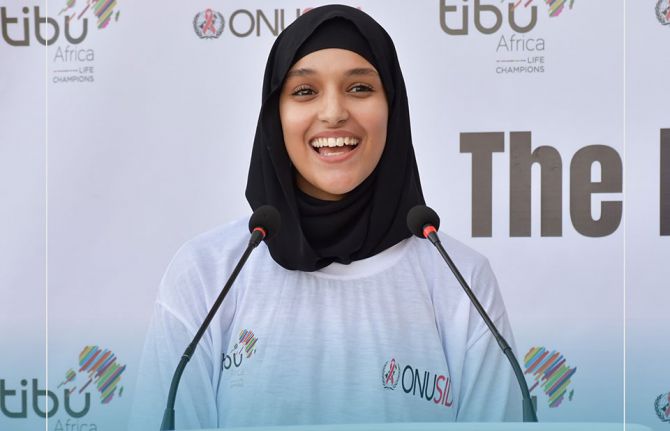
Feature Story
New handbook to improve design of HIV programmes focusing on men who have sex with men in the Middle East and North Africa region
03 October 2012
03 October 2012 03 October 2012
A new handbook to help design and implement HIV programmes focusing on men who have sex with men (MSM) in the Middle East and North Africa (MENA) was released on 27 September by UNAIDS in Cairo, Egypt. The handbook was presented at a workshop organized by the World Health Organization entitled "HIV Among Key Populations at Increased Risk of Sexual Transmission".
Entitled “HIV and Outreach Programmes with Men who Have Sex with Men in the Middle East and North Africa: From a Process of Raising Awareness to a Process of Commitment”, it aims to provide countries that are currently implementing MSM programmes with additional tools to improve them. It also provides other countries willing to initiate MSM programmes with sufficient elements to do so.
The new publication describes in four modules the whole cycle of a national HIV outreach programme aimed at engaging MSM. These four modules include: Situation analysis; outreach programme conceptualization, outreach approach, and monitoring. Each module contains scientific data and practical steps.
Prevailing taboos hamper the AIDS response
Sexuality and sexually transmitted infections (STIs) are sensitive issues that are rarely discussed in the MENA region and homosexuality and transexuality remain taboo subjects, according to the new report.
This handbook will give a strong theoretical and technical background and support to outreach workers; be it health care providers or peer educators
Elie Aaraj, President of the Regional/Arab Network Against AIDS (RANAA) and Executive Director of MENAHRA
"Most countries in the region criminalise same sex relations making it virtually impossible for this key population to seek or receive the necessary HIV prevention, treatment and care services," said Ali Feizzadeh, Senior Strategic Information Advisor at UNAIDS.
An increasing number of bio-behavioural surveys in the region show that the AIDS epidemic is concentrated within key populations at higher risk—notably MSM. The same surveys reveal that MSM regularly change sexual partners, and may be drug users or sex workers while their knowledge of STIs remains limited.
The new UNAIDS publication stresses that, while the current regional AIDS response is characterized by low coverage of HIV prevention programmes for key populations at higher risk, there is a growing awareness of the need to work with populations such as MSM on HIV prevention in the region. Currently, these efforts are mainly undertaken by non-governmental associations.
"All the countries in the region approved the Human Rights Declaration, however, some sensitive areas of work cannot be undertaken by the present governmental bodies. The role of the Civil Society is to bridge the gap between national support and the actual need,” said Elie Aaraj, President of the Regional/Arab Network Against AIDS (RANAA) and Executive Director of MENAHRA. “This handbook will give a strong theoretical and technical background and support to outreach workers; be it health care providers or peer educators," he added.
The UNAIDS handbook provides useful information, tips and tools to effectively reach MSM communities, establish trust and build relationships through continuous dialogue. The handbook emphasizes the importance of engaging the MSM population in the effective design of HIV outreach programmes.
The handbook is the result of the analysis of existing programmes and fieldwork conducted by partner civil society organizations in nine countries across the region. It complements the recently published WHO Guidelines that focus on good practice recommendations in the area of prevention and treatment of HIV and other STIs among MSM and transgender people.


